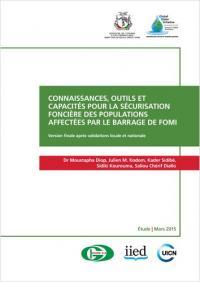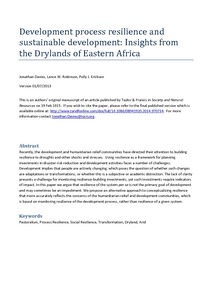Location
IUCN is a membership Union uniquely composed of both government and civil society organisations. It provides public, private and non-governmental organisations with the knowledge and tools that enable human progress, economic development and nature conservation to take place together.
Created in 1948, IUCN is now the world’s largest and most diverse environmental network, harnessing the knowledge, resources and reach of more than 1,300 Member organisations and some 16,000 experts. It is a leading provider of conservation data, assessments and analysis. Its broad membership enables IUCN to fill the role of incubator and trusted repository of best practices, tools and international standards.
IUCN provides a neutral space in which diverse stakeholders including governments, NGOs, scientists, businesses, local communities, indigenous peoples organisations and others can work together to forge and implement solutions to environmental challenges and achieve sustainable development.
Working with many partners and supporters, IUCN implements a large and diverse portfolio of conservation projects worldwide. Combining the latest science with the traditional knowledge of local communities, these projects work to reverse habitat loss, restore ecosystems and improve people’s well-being.
Resources
Displaying 51 - 55 of 142A cost-benefit framework for analyzing forest landscape restoration decisions
Forest landscape restoration activities are often misunderstood as involving high upfront costs and low rates of return. To address this gap in knowledge, this report presents a cost-benefit framework for accounting for the ecosystem services and economic impacts of forest landscape restoration activities in a way that allows the results to be structured to inform multiple types of restoration decision-making that can help decision makers understand the trade-offs of different restoration scenarios.
Knowledge, tools and capacity for land tenure security for people affected by the Fomi dam
The Fomi dam project is located on the Niandan tributary of the Niger in Guinea, 30 km upstream of the Niandan-Niger confluence, near Kankan (region of Upper Guinea). In development since 1988 with an update of the feasibility study in 1999, the Fomi project is integrated in the Sustainable Development Action Plan (SDAP) of the Niger Basin Authority (NBA) since 2007. An Environmental and Social Impact Assessment, consisting of an Environmental and Social Management Plan, Involuntary Resettlement Plan and a Local Development Plan, was completed in 2010.
Connaissances, outils et capacités pour la sécurisation foncière des populations affectées par le barrage de Fomi
Le projet de barrage de Fomi se situe sur le Niandan, affluent du Niger en Haute-Guinée, non loin de Kankan. Le projet Fomi est intégré au Plan d’action de développement durable (PADD) de l’Autorité du Bassin du Niger (ABN) depuis 2007. Une étude d’impact environnemental et social, composée d’un plan de gestion environnementale et sociale, d’un plan de réinstallation involontaire et d’un plan de développement local, a été finalisée en 2010.
Development process resilience and sustainable development: Insights from the Drylands of Eastern Africa
Recently, the development and humanitarian relief communities have directed attention to building resilience of pastoral communities to droughts and other shocks. While resilience thinking has much to offer, using resilience as a framework for investing in disaster risk reduction and development faces numerous challenges. Development implies that people are actively changing, which poses the question of whether such changes are adaptations or transformations, or whether this is a subjective or academic distinction.
Paving the way for gender-responsive FLR: The importance of forest landscape restoration for rural women in Armenia
In Armenia, the forestry sector and forest restoration policy development and decision making in natural resources management processes have been shaped as a result of women’s historical every day practices—which are also often drivers of deforestation and degradation—and yet women’s direct participation in these matters is frequently neglected. Forests in Armenia are state property and the management system is top-down, meaning that decisions are made at the government level and passed down through a hierarchy of power.







